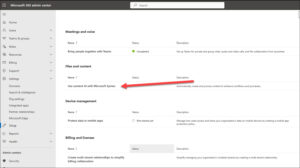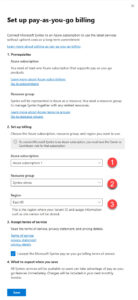Microsoft Syntex is a content understanding, processing, and compliance service that leverages intelligent document processing, content AI, and advanced machine learning.
Its primary function is to find, organize, and classify documents across SharePoint automatically and intelligently.
What Use is Microsoft Syntex?
With the help of Syntex, you can automate content-based processes and transform information in business documents into knowledge.
Instead of manually extracting data from hundreds or even thousands of files, Syntex extracts analyzes, and categorizes the data for you.
It’s not a new product – It was announced in 2020 and fully released 2 years later. Microsoft puts a lot of effort and resources to enhance existing features and deliver new ones.
Microsoft changed the licensing model of Syntex. Now it is only available as a pay-as-you-go add-on to your existing Microsoft 365 licenses
This type of licensing is way more cost-effective compared to the previous one (per-users licenses). You pay only for real actions (use) of Syntex.
Main Features of Microsoft Syntex
Content Assembly
Syntex can automatically generate standard repetitive business documents like contracts, service agreements, and more.
It uses modern templates based on frequently used business documents to generate new documents using SharePoint lists or user entries as data sources.
Prebuilt Document Processing
Syntex offers prebuilt models designed to save time when processing and extracting information from common business documents like contracts and invoices.
These models are pre-trained to recognize and extract structured information from such documents. You can use them without any additional training process.
Structured and Freeform Document Processing
Syntex provides structured models to identify field and table values in structured or semi-structured documents. In contrast, freeform models extract information from unstructured documents like letters and contracts.
Both types of models utilize Microsoft Power Apps AI Builder for creation and training.
Unstructured Document Processing
This model type is used to classify documents and extract information from them, especially for documents with varied compositions like letters or contracts.
Image Tagging
Syntex can automatically tag images with descriptive keywords using Artificial Intelligence (AI), making it easier to manage images in SharePoint document libraries.
Optical Character Recognition (OCR)
Syntex OCR service extracts printed or handwritten text from images, making the text searchable and indexable.
Document Processing Models of Microsoft Syntex
In Microsoft Syntex, content understanding begins with document processing models.
These models are designed to identify, classify, and extract essential information from documents uploaded to SharePoint libraries. Once applied to a SharePoint library, the model associates with a content type and has columns to store the extracted information.
The content type created is stored in the SharePoint content type gallery, and users have the option to utilize existing content types.
Two Types of Models in Microsoft Syntex
Microsoft Syntex offers two main types of models: Custom models and Prebuilt models.
These models can be categorized as enterprise models (created in a content center) or local models (created on a local SharePoint site).
Custom Models in Microsoft Syntex
Unstructured Document Processing
This model is ideal for unstructured documents like letters or contracts. It identifies text based on specific phrases or patterns, determining both the file type and the information to extract.
Freeform Document Processing
Designed for unstructured and freeform documents, this model uses Microsoft Power Apps AI Builder. It’s suitable for English documents in PDF or image formats when automatic document classification isn’t required.
Structured Document Processing
This model identifies field and table values in structured or semi-structured documents like forms and invoices. It understands the layout of a form from example documents and then extracts data from similar locations.
Prebuilt Models in Microsoft Syntex
For those who don’t need a custom model, prebuilt document processing models are available.
These models have been trained for specific structured documents and include:
Contract Processing
Analyzes and extracts key information from contract documents, identifying details like client name, billing address, and expiration date.
Invoice Processing
Designed for sales invoices, this model extracts information such as customer name, billing address, and amount due.
Receipt Processing
This model analyzes and extracts information from sales receipts, identifying details like merchant name, transaction date, and total amount.
How to Configure Azure Billing?
Before you start creating models and extracting data from your document, you must configure Syntex in the Microsoft 365 admin center:
1. Navigate to the M365 Admin portal
(https://admin.microsoft.com) and select Setup from the left-hand navigation pane.
2. Go to the File and Content section and open Use content AI with Microsoft Syntex

3. Syntex is available only as a pay-as-you-go model right now
You must set up billing using your existing Azure subscription (this is the hard requirement). To do this click on the Set up billing

4. Set up the connection between Syntex and Azure. Select:
- existing Azure subscription (1).
- existing Resource group (2). It’s a good idea to create a new empty group for Syntex.
- Region (3).

5. The configuration process will take a while
Usually it shouldn’t take longer than a minute.
When it’s done, you can go to the next section in this post.

Configure Content Center in Microsoft Syntex
To create and manage models globally, you need to create a content center.
The content center is a dedicated SharePoint site where you can create models, train them, and apply them to specific SharePoint document libraries.
1. Now you are ready to configure Syntex
The Manage Microsoft Syntex section is now available – click on the section.

2. Select Content Center and click on Create a Content Center

3. Enter a Center name and confirm
A dedicated SharePoint site will be created in the background process.

4. When the process finishes site creation copy the site URL and open it in the new tab
The Content Center is ready, and you can start exploring available options. This is the main entry point for your enterprise models.

Microsoft Syntex: Real-World Scenarios
Microsoft Syntex can be employed in various scenarios to enhance content understanding and processing within your organization.
Here are some examples:
- Automatically Generate Routine Documents
Leverage Syntex content assembly to design modern templates for files that are frequently generated. - Generate Documents in Bulk
Use Syntex content assembly to produce a large number of similar documents. - Handle Incoming Documents
Use Syntex to manage and process incoming business documents, such as insurance forms, business verifications, and rental contracts. - Make Information Easier to Find
Implement Syntex to simplify the discovery and usage of business documents and employee information in document libraries. - Find Content Details
Use Syntex to centralize, organize, and retrieve content, making specific details more accessible. - Document Compliance
Utilize Syntex to ensure compliance with retention and sensitivity requirements for business documents.
These scenarios provide a glimpse into Microsoft Syntex and how it can be tailored to meet specific organizational needs.
Wrapping it Up
In this post, I showed you how to configure pay-as-you-go with Syntex and create the Content Center site.
Now you are ready to create your first model, train it, and use it on your documents. In the next post, I will show you how to create such a model and use it in a real-life scenario.
Unlock the Power of Microsoft Syntex with WME’s Expert Services!
Ready to supercharge your document processing and content understanding?
Discover the full potential of Microsoft Syntex with Windows Management Experts (WME).
Our specialized services can help you seamlessly integrate, configure, and harness the true capabilities of Syntex within your Microsoft 365 environment.
Contact us by clicking here:








